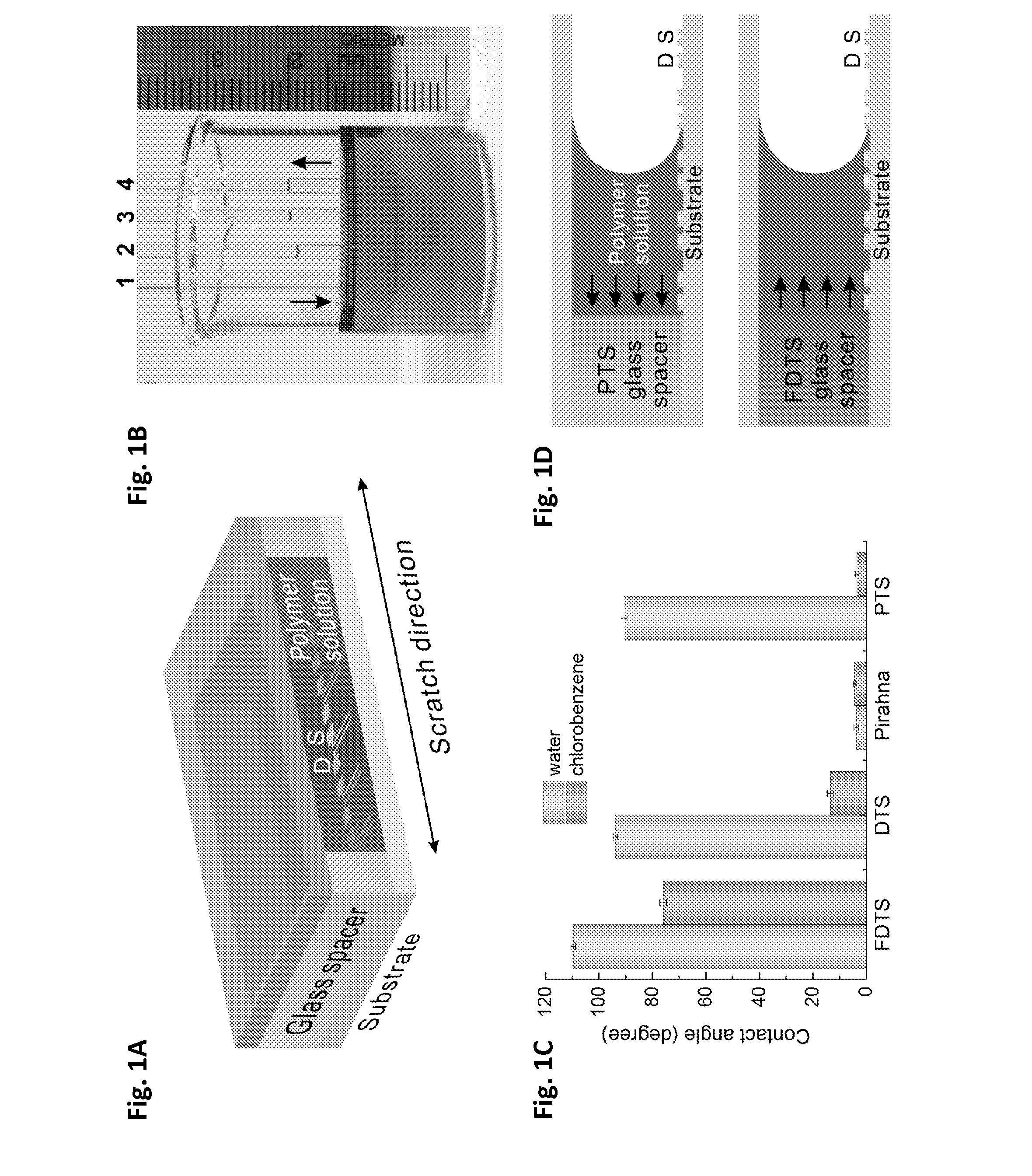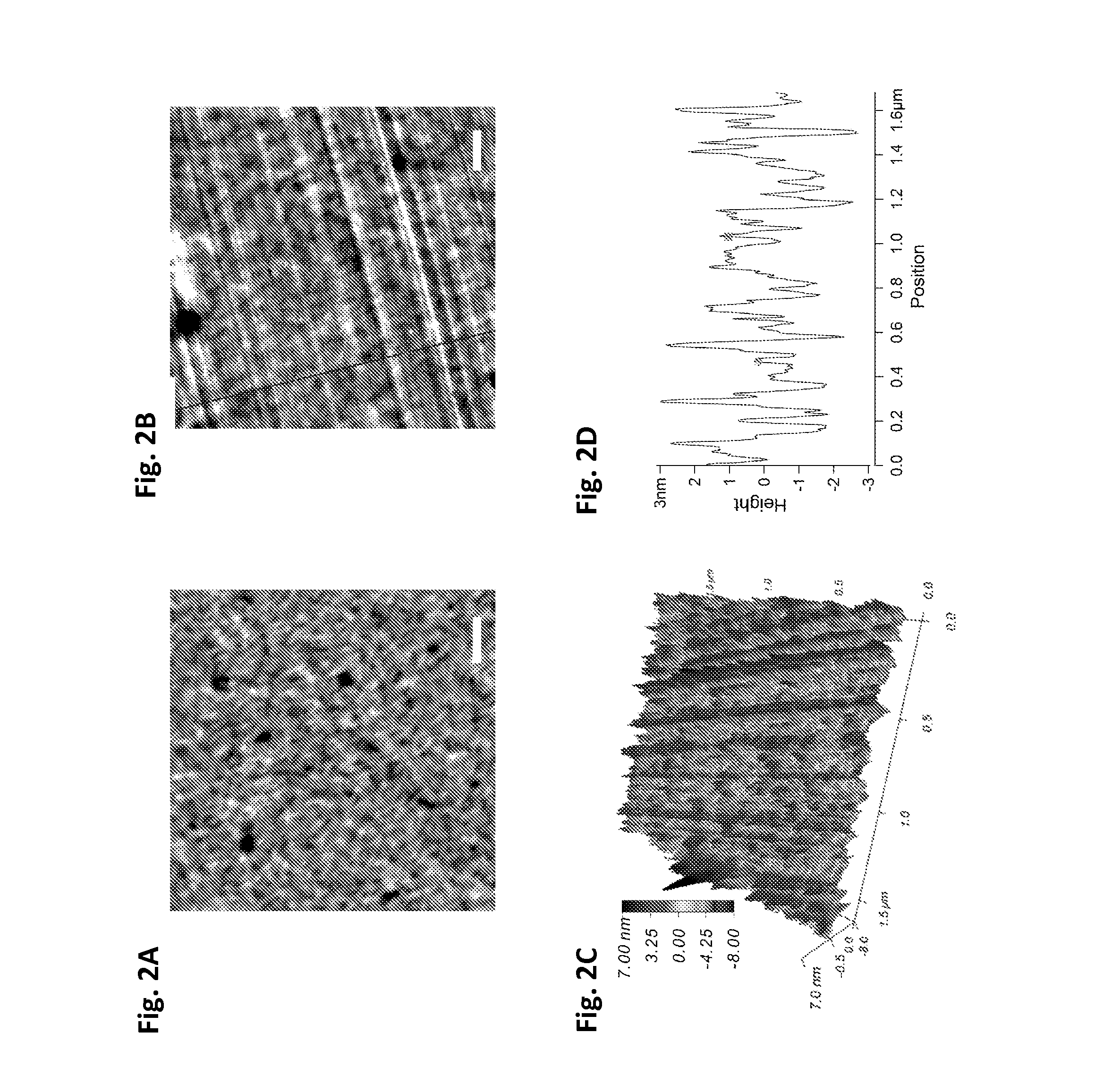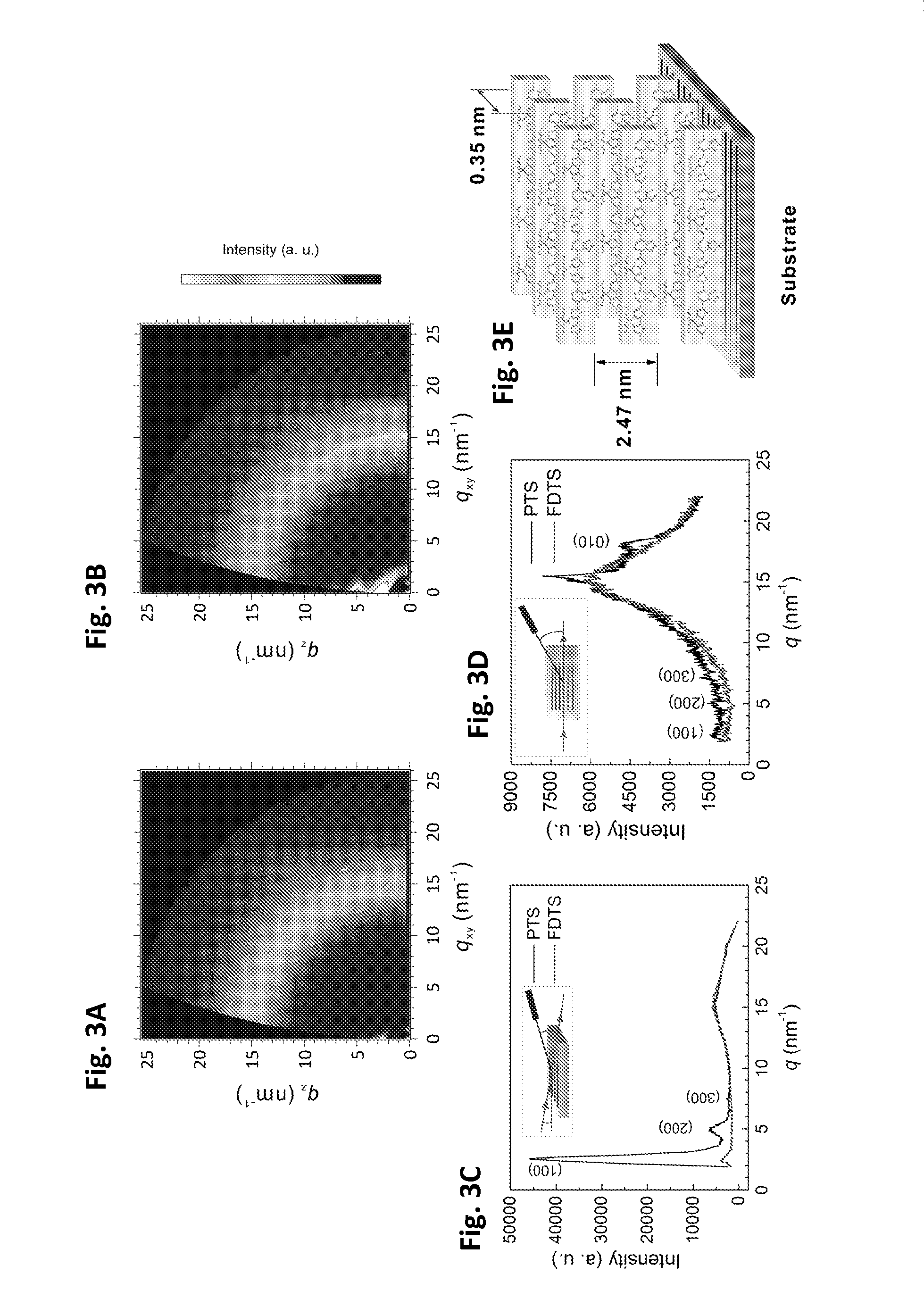High mobility polymer thin-film transistors with capillarity-mediated self-assembly
a polymer thin-film transistor, high-mobility technology, applied in the direction of solid-state devices, thermoelectric devices, coatings, etc., can solve the problems of low mobility, low mobility, affecting device performance and development, etc., to improve device performance, eliminate surface charge traps, and increase saturation mobility
- Summary
- Abstract
- Description
- Claims
- Application Information
AI Technical Summary
Benefits of technology
Problems solved by technology
Method used
Image
Examples
example 1
Self-Assembly of Highly Oriented Nanocrystalline Semiconducting Polymers with High Mobility
[0064]A sandwich tunnel system is provided, which is separated by functionalized glass spacers to induce capillary action for controlling the polymer nanostructure, crystallinity, and charge transport. Using capillary action, saturation mobilities with average values of 21.3 cm2V−1 s−1 and 18.5 cm2V−1 s−1 have been demonstrated on two different semiconducting polymers at a transistor channel length of 80 μm. These values are limited by the source-drain contact resistance, Rc. Using a longer channel length of 140 μm where the contact resistance is less important, μh=36.3 cm2V−1 s−1 was measured. Extrapolating to infinite channel length where Rc is unimportant, the intrinsic mobility for PCDTPT (Mn=140 kDa) at this degree of chain alignment and structural order is μh=36.3 cm2V−1 s−1. These results demonstrate a pathway towards high performance, solution processable, and low-cost organic electron...
example 2
Atomic Force Microscopy of Polymer Films
[0069]To investigate how the strength of capillary action can affect the polymer alignment on the textured substrate, atomic force microscopy (AFM) in tapping mode was performed to examine and compare the nanomorphology on the bottom surfaces of polymer films (see the details for sample preparation in Example 6), prepared using two opposite treatments (FDTS and PTS) to the spacers in the sandwich systems, using identically nano-grooved Si / SiO2 substrates. The donor-acceptor copolymer, poly[4-(4,4-dihexadecyl-4H-cyclopenta[1,2-b:5,4-b′]dithiophen-2-yl)-alt-[1,2,5]thiadiazolo[3,4-c]pyridine] (PCDTPT, Mn=140 kDa) was used to prepare the solution [27].
[0070]FIGS. 2A and 2B show the AFM topographic images of the bottom surfaces (taken from areas approaching the spacers) of two deposited films prepared using the spacers with FDTS treatment and PTS treatment, respectively. The film prepared using FDTS-treated spacers exhibits featureless surfaces and...
example 3
Grazing Incidence Wide Angle X-Ray Scattering of Films
[0071]As the AFM analysis is limited to the surface morphology, to gain deeper insight into the molecular packing and crystallinity in the deposited films, measurements by grazing incidence wide angle X-ray scattering (GIWAXS) were conducted on the deposited films. Several noticeable changes in the polymer microstructure are observed in the 2D GIWAXS patterns for the films prepared using FDTS-treated spacers and PTS-treated spacers, as shown in FIGS. 3A and 3B, respectively. Only minor first-order lamellar scattering can be observed in FIG. 3A, indicating the lack of long-range order; the film prepared using FDTS-treated spacers is essentially amorphous. By contrast, the pattern of the film, prepared using PTS-treated spacers exhibits numerous diffraction features. One can observe (100), (200) and (300) scattering peaks, consistent with aligned polymer chains, and clear indication of π-π interchain stacking (FIG. 3B). The X-ray s...
PUM
| Property | Measurement | Unit |
|---|---|---|
| Angle | aaaaa | aaaaa |
| Angle | aaaaa | aaaaa |
| Volumetric flow rate | aaaaa | aaaaa |
Abstract
Description
Claims
Application Information
 Login to View More
Login to View More - R&D
- Intellectual Property
- Life Sciences
- Materials
- Tech Scout
- Unparalleled Data Quality
- Higher Quality Content
- 60% Fewer Hallucinations
Browse by: Latest US Patents, China's latest patents, Technical Efficacy Thesaurus, Application Domain, Technology Topic, Popular Technical Reports.
© 2025 PatSnap. All rights reserved.Legal|Privacy policy|Modern Slavery Act Transparency Statement|Sitemap|About US| Contact US: help@patsnap.com



